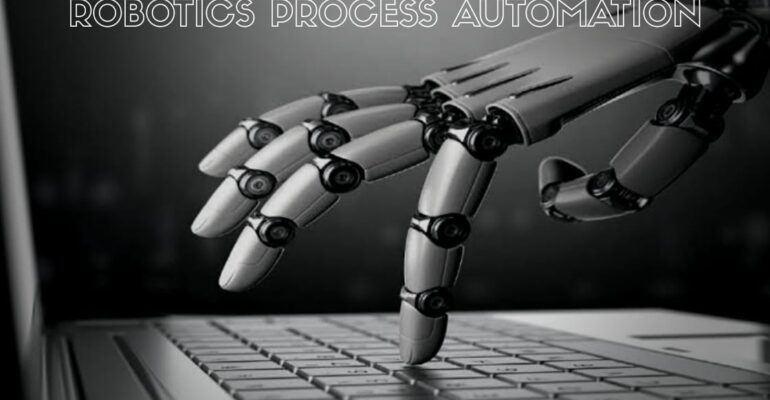Cyber Security improvement in Robotics Process Automation

Cyber Security improvement in Robotics Process Automation
Robotics process automation is garnering prevalence in cyber security in robotics. Cyber security across the globe are banking on robotic process automation to reduce exposure to threats by decreasing the detection and responding time to unusual behavior.
Robotic process automation, through bots, provide sturdy security shield from malicious viruses or intrusions, enhancing error reduction and productivity of employees. Robotic process automation bots are straight forwardly employee General Data Protecting Regulations (GDPR) without disturbing the flow of information. In the event of emergency shutdown, the bot creates back-up copies of key procedures. The bots are able to retrieve data from distant locations. Access security is quintessential in a bid to protect crucial aspects of organizations from accidental human errors or intruder attacks.
Increasing dependency of robotics for various purposes in North America and Europe:-
Upsurge in robotic automation practices in manufacturing bracket of North America and Western Europe is driving the attention of market players.
Enterprises are displaying huge traction for cyber security in robotics to sustain industrial productivity. Germany and the U.S. are employing drones and robotics in mining, and defense applications to access hard- to- hard sites. As a consequence, cyber security in robotics becomes preeminent to avoid wrathful eyes of cyber attacker’s.
Robots are making forays into the medical space, propelling the demand for cyber security solutions to avoid man in the middle attack on medical robot, ensuring safe surgeries of patients.
Cloud is least cost- efficient medium to host AI development and production a factor influencing market players, suck as McAfee to perform acquisition of NanoSec , a multi- cloud, zero- trust application and security platform. McAfee acquired NanoSec in order to allow the organization to improve governance and compliance.
How Growth will Unfold:-
The trend of cyber security in the robotics field is in its nascent stage, yet robot makers are beginning to understand the susceptibility created by connected robots and automation equipment during operations.
Hackers and crackers have proved to be successful in breaking into the traditional methods of cyber security in robotics, bolstering the demand for deep IIoT (Industrial IoT) architecture to tackle the attacks. AI and ML are set to disrupt the cyber security in robotics space, recreating jobs for skilled technicians.
Artificial Intelligence significantly depends on algorithms of chunks of available information majorly entered by humans. As such, human intelligence is essential in discovering the scope of risks before AI solutions dives in to detect cyber criminals and curb threats. Further, with countries across the globe employing robots for diverse applications, particularly industrial robots, the degree of vulnerability increases. Cyber security in robotics driven by new-age technologies is set to remain the answer to such potential risks.
Cyber security in Robotics Market:-
- The global cyber security in robotics market size in 2018 was valued ~US$ 2.4 Bn.
- The cyber security in robotics market is expected to grow at a CAGR of ~11% during the forecast period of 2019-2029.
- Increasing demand for security solutions such as authentication solutions, and denial of service protection solutions and encryption solution – due to cyber-attacks such as robot denial of service attack, Man-in-the-Middle attack, spoofing, phishing attack, and brute force attack – are factors that have been driving the sales of cyber security in robotics.
- North America is a prominent region for the cyber security in robotics market, which accounted for ~45% share in 2018. It is also likely to offer greater opportunities for the market players, as enterprises in the region are heavily investing in robotics security to improve the productivity.
- Japan is among the prominent markets for cyber security in robotics, as adoption of robots is increasing in healthcare and defence sectors for increasing productivity and increasing the need for better robot security. To secure robots from cyber-attacks, companies are investing heavily in robotic security solutions such as authentication, encryption, denial of service protection, and secured communication.
Increasing incidences of cyber attacks:-
The usage of robots is increasing in manufacturing, military, medical, and automated vehicle markets. As robots are prone to cyber-attacks at hardware, firmware/OS, and application level, there is an immediate need to create cyber security solutions.
Cyber-attacks on different types of robots such as ransomware attacks on industrial robot that block access to data and entire production system and Man-in-the-Middle attack on medical robot, due to which the unauthorized entity takes control of the medical robot, are increasing.
The impact of these attacks results in loss of revenue, data and human safety. Due to these factors the demand for cyber security solutions such as authentication solutions and denial of service protection solutions is expected to increase at a rapid pace.
Cyber Security in Robotics Market Structure Analysis
● The global cyber security in robotics market is fragmented in size, which remains a key factor for its dynamic competitive nature.
● The global cyber security in robotics market serves the competition landscape, where majority of key players maintain their strategic focus on mergers, acquisitions, partnership, takeover, product development, and target strong global footprint.
● In order to enhance their expertise and capabilities, key stakeholders in the cyber security in robotics market are focusing on M&A activities, in addition to conducting awareness and certification programs.
● In August 2019, McAfee acquired NanoSec, which is a multi-cloud, zero trust application and security platform. This acquisition will enable the organization to improve governance and compliance and to reduce the risk of the cloud deployment.
● In Feb 2019, TÜV Rheinland, introduced a new personnel certification program to address the demand for cyber security expertise in the complex and challenging industrial security sector and operational technology (OT).
● Tier-1 companies hold ~45% share of the cyber security in robotics market. Vendors such as McAfee, TUV Rheinland, Symantec, and Akamai Technologies are among the largest and most experienced in the industry, and have a significant regional coverage across the globe.


